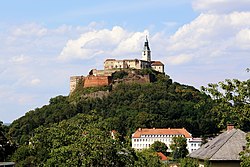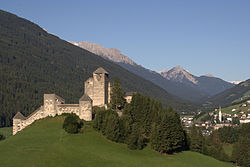This article needs additional citations for verification .(July 2015) |
| Castle Saalhof | |
|---|---|
 Castle Saalhof in winter | |
| Site information | |
| Code | AT-5 |
| Location | |
| Coordinates | 47°21′36.227″N12°48′3.708″E / 47.36006306°N 12.80103000°E |
Castle Saalhof is one of the oldest castles in the Pinzgau region. It dates back to the 11th century, when it apparently was the home of the Counts of the region. During the renovation of the facade in 2010, the oldest parts of the castle on the north-east side were revealed. In 1600, Castle Saalhof was extended.















